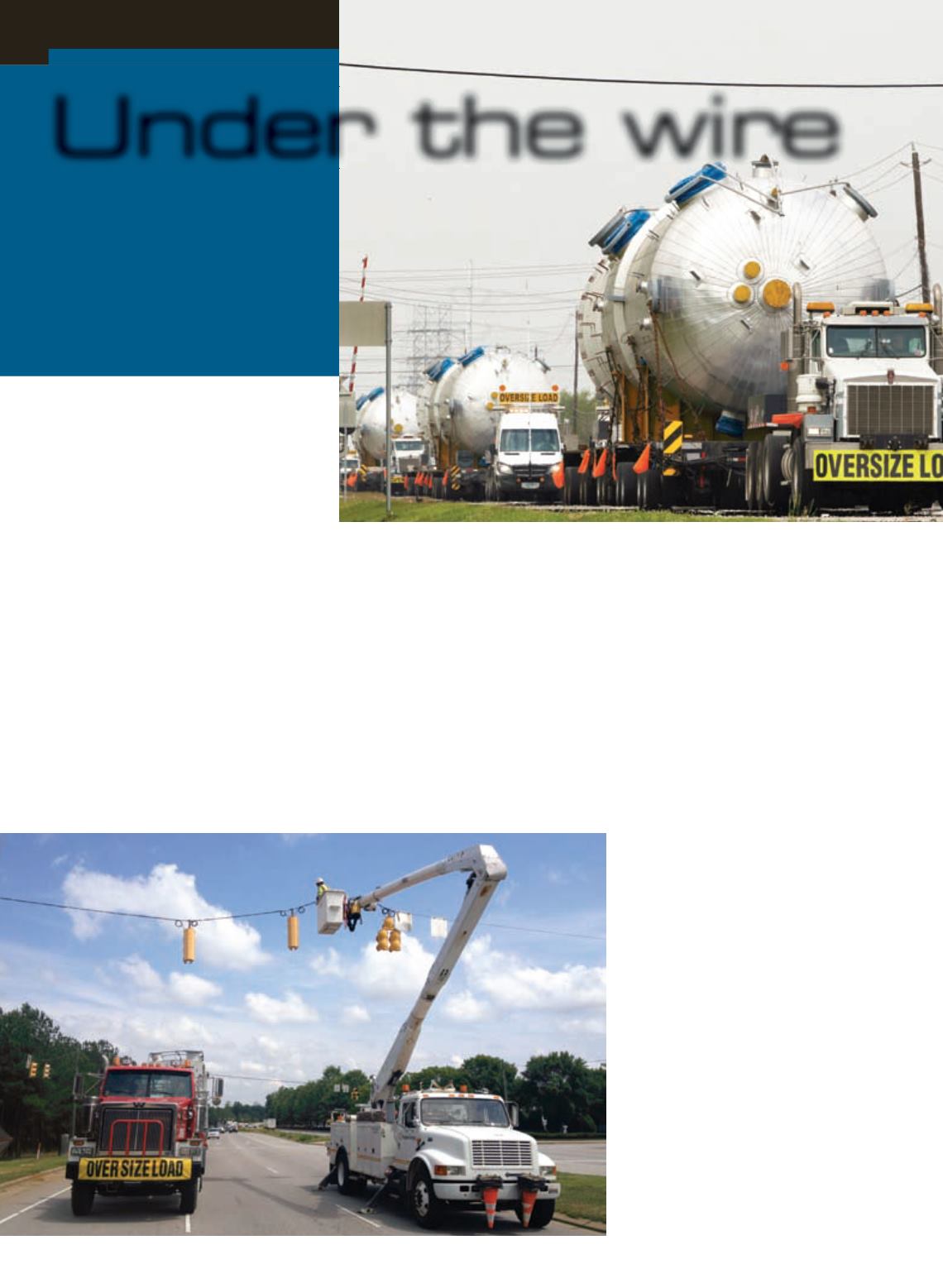
TerryWhite
reports
on finding a solution to
the practice of electrical
utilities jacking up rates to
elevate power lines.
52
ACT
APRIL 2014
Changing rules
In2012,DukeEnergybegan routinely
sendingunnecessaryequipment and
personnel to jobs andchargingmuchmore
for its services than ithadpreviously.At
the same time, theutilitycomplicated
movesbychangingwork rules to require
a2-foot vertical clearance for tripleor
quadruplewires. Furthermore, additional
invoices from theutility sometimes arrived
months afterOswalthad finalizedbilling
to its customers.
After eight bucket trucks, twopickup
trucks and10DukeEnergyemployees
arrivedonone jobwithout a singleperson
ever leavingavehicle toperform services,
DavidE.Oswalt, thecompany’spresident,
recalled receivingan invoice for$11,000.
“At the same time,DukeEnergywas
moving itsown transformers inways that
violated theverypolicies itwas askingus
to followon state roads,”he said. “Their
righthanddidn’t knowwhat their left
handwasdoing.”
He traced theproblems largely toa
mid-levelmanager atDukeEnergywho
selectively read theNational ElectricCode,
reinterpreted it, and thenmade some
far-reaching,misinformeddecisions that
impededbothcarriers and their customers
whoplayedavital role in the state’s
commerce.
The situationespeciallyalarmedSC&RA
becauseDukeEnergy isAmerica’s largest
electricpowerholdingcompany, supplying
anddeliveringenergy toapproximately
7.2millionU.S. customers.TheCharlotte,
NC-basedcompanyhas approximately
TruckingAssociation (SCTA). “It seemed
like therewere inconsistenciesbetween
work rules andpricingbetween the two
entities andevenbetweendifferent states.
Prior to that, our carriershadno issues
withDukeEnergy.”
Bringing the issue toaheadwere
complaints fromSC&RAmember
company J.E.Oswalt&Sons, a family
owned specializedheavy liftingand
transport companybased inBatesburg, SC.
Oswalthadalways enjoyedagoodworking
relationshipwithDukeEnergyandother
utilitieswhen their serviceswere required
for amove.
Under thewire
REGULATORYREVIEW
Ultimately, Duke
Energy revised its
oversize load policy
to revert to its
previous practices
and agreed to
return rates to
their previous
reasonable levels.
E
lectrical utilities increasinglyare
shockingAmerica’s specialized
carriers–withexorbitant charges
toelevatepower lines along routes for
oversize loads.
“If a specializedcarrierhasbudgeted
$2,000 to$3,000because thathasbeen
the traditional charge for this serviceand
theutility suddenlyandunexpectedly
increases those fees to$20,000 to$30,000
per trip, it becomes extremelydifficult for
that carrier todobusiness,” saidSteven
Todd, SC&RAdirectoryof advocacy.
“We’rehearingof a few isolated incidents
where final bills fromutilities arecoming
inat over$50,000.”
SC&RA learned that theproblemhad
begun toarisemore frequently in the
Carolinas.
“We suspected thiswashappening
becauseProgressEnergyandDukeEnergy
wereundergoingamerger,” saidRick
Todd, president of theSouthCarolina


